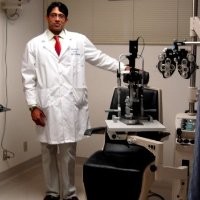A recent breakthrough in cataract research may offer a new alternative to surgery. A group of researchers, affiliated with the National Institutes of Health (NIH), have found a protein called RNF114 that can potentially reverse the effects of cataracts, a common age-related condition that clouds the lens of the eye. This discovery, published in the Journal of Clinical Investigation, could pave the way for non-surgical treatments for cataracts, a major cause of vision loss worldwide.
Cataract surgery, while effective, comes with risks. Not to mention, access to the procedure is limited in some regions, making untreated cataracts a leading cause of blindness. This new discovery may offer a new approach to manage the condition, according to Xingchao Shentu, M.D., a cataract surgeon and study co-investigator from Zhejiang University, China.
The researchers, whose work is affiliated with NIH’s National Eye Institute (NEI), were studying the 13-lined ground squirrel, a mammal known for its ability to hibernate. This squirrel’s unique capacity to endure cold and metabolic stress during hibernation, coupled with its predominantly cone-based retinal photoreceptor cells, makes it an ideal subject for exploring a variety of eye diseases.
During hibernation, it was observed that the squirrel’s lenses cloud over at temperatures around 4 degrees Celsius, but quickly clear up after rewarming. However, rats, a non-hibernating species used for comparison, developed cataracts at low temperatures that did not resolve with rewarming.
The study’s co-lead investigator, Wei Li, Ph.D., senior investigator in the NEI Retinal Neurophysiology Section, suggests that understanding the molecular mechanisms behind this reversible cataract formation could lead us to potential treatment strategies.
Cataracts form as proteins in the lens start to misfold and cluster, distorting and scattering light as it passes through the lens. This disruption of protein homeostasis is unclear but is known to be associated with aging.
The researchers used a lab-based model to study the squirrel’s reversible cataracts at a molecular level. They discovered elevated levels of the protein RNF114 during the rewarming phase in the squirrel compared to the non-hibernating rat. RNF114 has been shown to help identify and degrade old proteins.
In a further experiment using the rat cataract model, lenses incubated at 4 degrees Celsius were pretreated with RNF114. Unlike the usual outcome, the cataracts rapidly cleared upon rewarming.
This discovery indicates that it may be possible to stimulate cataract clearance in animals. Future research will focus on refining this process, aiming to precisely regulate protein stability and turnover, which could also have implications for many neurodegenerative diseases.


Comments are closed for this post.